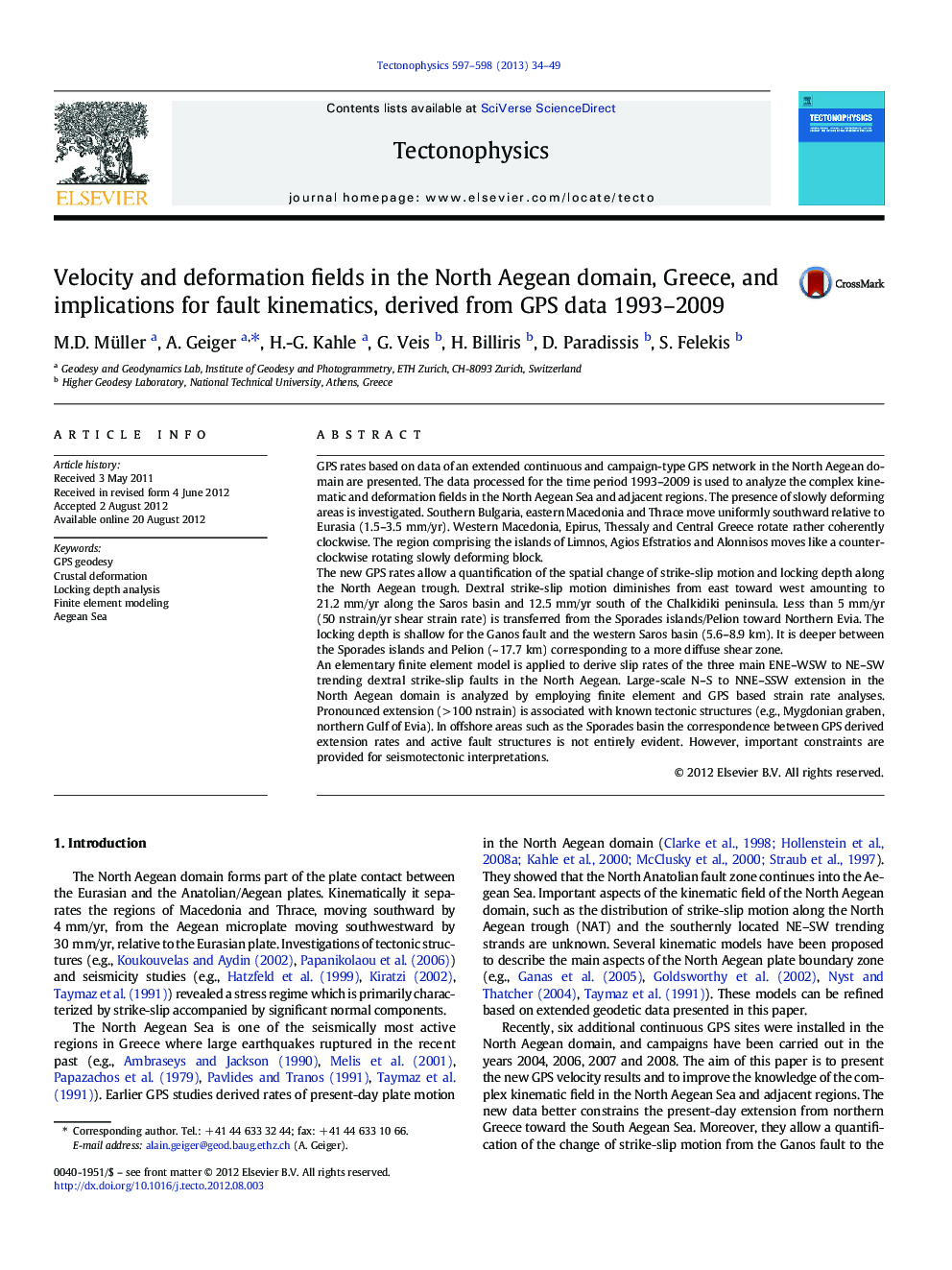| کد مقاله | کد نشریه | سال انتشار | مقاله انگلیسی | نسخه تمام متن |
|---|---|---|---|---|
| 4692398 | 1636789 | 2013 | 16 صفحه PDF | دانلود رایگان |

GPS rates based on data of an extended continuous and campaign-type GPS network in the North Aegean domain are presented. The data processed for the time period 1993–2009 is used to analyze the complex kinematic and deformation fields in the North Aegean Sea and adjacent regions. The presence of slowly deforming areas is investigated. Southern Bulgaria, eastern Macedonia and Thrace move uniformly southward relative to Eurasia (1.5–3.5 mm/yr). Western Macedonia, Epirus, Thessaly and Central Greece rotate rather coherently clockwise. The region comprising the islands of Limnos, Agios Efstratios and Alonnisos moves like a counterclockwise rotating slowly deforming block.The new GPS rates allow a quantification of the spatial change of strike-slip motion and locking depth along the North Aegean trough. Dextral strike-slip motion diminishes from east toward west amounting to 21.2 mm/yr along the Saros basin and 12.5 mm/yr south of the Chalkidiki peninsula. Less than 5 mm/yr (50 nstrain/yr shear strain rate) is transferred from the Sporades islands/Pelion toward Northern Evia. The locking depth is shallow for the Ganos fault and the western Saros basin (5.6–8.9 km). It is deeper between the Sporades islands and Pelion (~ 17.7 km) corresponding to a more diffuse shear zone.An elementary finite element model is applied to derive slip rates of the three main ENE–WSW to NE–SW trending dextral strike-slip faults in the North Aegean. Large-scale N–S to NNE–SSW extension in the North Aegean domain is analyzed by employing finite element and GPS based strain rate analyses. Pronounced extension (> 100 nstrain) is associated with known tectonic structures (e.g., Mygdonian graben, northern Gulf of Evia). In offshore areas such as the Sporades basin the correspondence between GPS derived extension rates and active fault structures is not entirely evident. However, important constraints are provided for seismotectonic interpretations.
► Kinematic and strain rate fields of the North Aegean based on GPS data 1993–2009
► Analysis of the locking depth along the NAT
► Quantification of dextral slip on NE–SW trending faults in the North Aegean Sea by FEM
Journal: Tectonophysics - Volumes 597–598, 19 June 2013, Pages 34–49